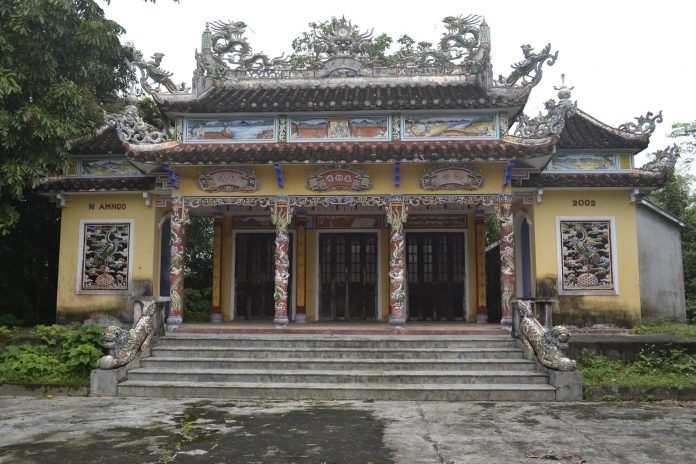The “Big House” in Chau Doc: Showcasing the Beauty of Asian Culture

If you are in Chau Doc, you’ve probably heard of the “Big House” at Le Loi Street owned by the Le Long clan. It is a popular tourist destination and for all the right reasons.
The house got its name because it was the largest house in the town during that time. It was built from 1909 to 1912 with an interesting mix of designs. Its exterior is French-influenced with solid window panes, tile roofs and intricate ornamental decorations. The interior on the other hand is Western style with lustres and floor tiles.
The furniture and utensils are made with nacre or mother-of-pearl. The wood was bought from Laos and Cambodia. For the nacre, wild snails and masters of the craft were brought in from the North because there was no trade in the South at that time.
An altar of the seventh ancestor of the Le Cong clan stands in the middle of the house while those of the more recent generations are placed on the sides. Chinese poems conveying compassion and humanity in general can also be found in the house inlaid with nacre on all the pillars and wall panels.
All throughout, Asian design is dominant, intelligently and beautifully blended in with foreign architecture. Interestingly too, the house is not made of concrete but of shell powder, sand, treacle and lindera myrrha resin.
Perhaps the most important part of the house are the three relics which signify affluence: the first relic is the Decree of Conferment of Sainthood on Nguyen Huu Canh, the trailblazer for the expansion of the Southern borders. Such a title is usually awarded to someone who accomplished an extraordinary service worthy of reverence, but Canh’s feat was so significant that he was deemed deserving of the merit. The second and third decrees of Sainthood on Canh was bestowed by King Tu Duc and King Minh Mang.
According to the clan’s history, Lord Le Cong Thoan from Thanh Hoa Province arrived at Chau Doc with his wife and decided to settle there. They tilled the land, gave money to the poor, donated land to the homeless and built communes and schools for everyone in town. When a flood came and nearly destroyed the place, Mrs. Huynh Thi Phu borrowed rice from the government and distributed it to the people. The couple has such good hearts that the king accorded Thoan with the highly-esteemed decrees as a sign of gratitude and honour. Every year on Canh’s death anniversary which falls on the 10th of the fifth lunar month, descendants of the clan parade the conferments to the Chau Phu Saint temple for the people to worship.
The second relic is an inlaid picture of “Golden branch with gemstone leaves” which show images of gold branches and emerald leaves. It is kept safe in a secure and confidential deposit box which is only taken out during important gatherings.
The third relic is the genealogy book of the Le Long family which contains a complete list of all the names and relationships of the members of the clan starting from the first generation up to the present. With its highly crucial content, the value is priceless and irreplaceable.
Chau Doc has ten other century-old houses but the “Big House” of the Le Cong clan is the only one that still stands as strong as it did when it was first built, proof that Asian architecture, and culture in general, is exceptionally stable and beautiful, something which should be proud of all over the world.









